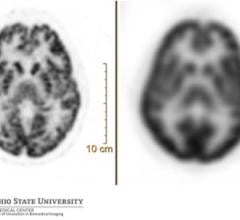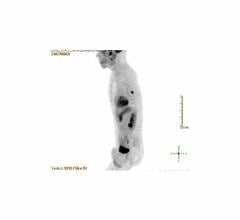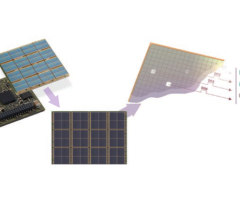September 1, 2011 — Hong Kong Sanatorium & Hospital (HKSH) has selected GE Healthcare’s tri-modality imaging system ...
PET Imaging
Positron emission tomography (PET) is a nuclear imaging technology (also referred to as molecular imaging) that enables visualization of metabolic processes in the body. The basics of PET imaging is that the technique detects pairs of gamma rays emitted indirectly by a positron-emitting radionuclide (also called radiopharmaceuticals, radionuclides or radiotracer). The tracer is injected into a vein on a biologically active molecule, usually a sugar that is used for cellular energy. PET systems have sensitive detector panels to capture gamma ray emissions from inside the body and use software to plot to triangulate the source of the emissions, creating 3-D computed tomography images of the tracer concentrations within the body.
August 23, 2011— UltraSPECT of Haifa, Israel, announced the sale of more than 10 of its wide beam reconstruction (WBR) ...
August 18, 2011 – The Methodist Hospital Research Institute in Houston, Texas, and Philips Healthcare have collaborated ...
Digital technology is opening remarkable opportunities for clinical positron emission tomography (PET) about which ...
August 18, 2011 - A new KLAS report, "Positron Emission Tomography (PET)/Computed Tomography (CT) 2011-New Technologies ...
In the yesteryears of over-optimism, when medical imaging was in its heyday, magnetic resonance spectroscopy (MRS) was ...
August 4, 2011 – Published last week in The American Journal of Roentgenology, researchers from Swedish Cancer Institute ...
Precision can have an enormous impact on patients. From diagnosis to patient monitoring (see “How Digital PET/CT Can ...
August 2, 2011 – Two new studies published in the August 2011 issue of The Journal of Nuclear Medicine (JNM) provide ...
August 2, 2011 – An estimated 1.7 million clinical positron emission tomography (PET) patient studies were performed in ...
Typically, the only radiation facing travelers is from the airport scanners they must walk through to board airplanes ...
PET is getting ready to venture outside oncology, cardiology and mainstream neurology. High on the list of new clinical ...
July 26, 2011 – The U.S. Food and Drug Administration (FDA) is alerting healthcare professionals to stop using CardioGen ...
Wielding an assortment of high-energy photons, ultrasonic waves and radiofrequencies, radiology has made a practice of ...
July 19, 2011 – The study "Use of Florbetapir-PET for Imaging beta-amyloid Pathology," published in the Jan. 19, 2011 ...
Analog is approximate. Digital is specific. Therein lies the fundamental difference between digital PET and its analog ...
Despite its first commercial appearance in the late 1970s, positron emission tomograpnhy (PET) did not begin gaining ...
July 13, 2011 – Based on its recent analysis of the medical imaging market, Siemens Healthcare was given the 2011 North ...
July 5, 2011 – A new treatment option may soon be available for children with neuroblastoma, according to research ...
The new imaging modality of positron emission tomography (PET)/magnetic resonance imaging (MRI) was introduced in the U ...
Society of Nuclear Medicine (SNM) President George Segall, M.D., chief of the nuclear medicine service at the VA Palo ...
June 14, 2011 – Definitive proof of an adverse effect of chronic marijuana use revealed at SNM’s 58th annual meeting ...
June 6, 2011 — A study presented at the Society of Nuclear Medicine's (SNM) annual meeting outlines a positron emission ...
June 10, 2011 – The U.S. Food and Drug Administration (FDA) granted Siemens Healthcare 510(k) clearance for the Biograph ...


 September 01, 2011
September 01, 2011 
















